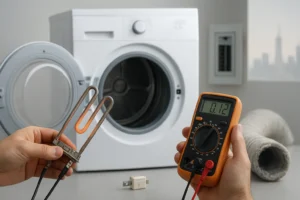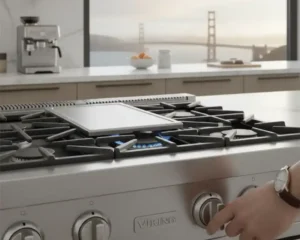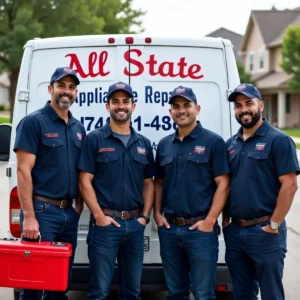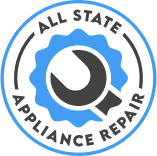For effective stove upkeep, focus on routine cleaning of all parts with mild, non-scratch solutions to avoid surface damage and buildup. On gas models, routinely examine flame ports for obstructions and scrutinize fuel supply lines for potential hazards each year. Keep the baking chamber in top shape by verifying gasket integrity, fine-tuning heat levels, and addressing messes right away to enhance energy use and reduce risks. Arrange expert yearly evaluations to confirm everything operates smoothly and head off serious complications. Embracing these professional maintenance approaches will not only prolong your stove’s lifespan but also optimize its daily functionality.
Understanding the Importance of Stove Maintenance
Stoves are the heart of any kitchen, whether in a bustling home or a high-volume professional setting. Neglecting them can lead to inefficient cooking, higher energy bills, safety hazards like gas leaks or electrical faults, and costly repairs. Based on insights from various appliance care resources, proper maintenance can extend a stove’s average lifespan from 10-15 years to well beyond, depending on usage. This guide draws from comprehensive best practices, covering both gas and electric types, to provide deeper, more actionable advice than typical checklists. We’ll break it down by frequency—daily, weekly, monthly, and annual—while highlighting differences between stove types and common pitfalls to avoid.
Daily Cleaning Routine: The Foundation of Longevity
Consistency in daily habits prevents minor issues from escalating. Start by wiping down all exterior surfaces after every use with a soft microfiber cloth dampened in warm water mixed with a gentle dish soap. This removes grease splatters and food residues that can harden and cause staining or odors over time. For glass cooktops on electric stoves, use a specialized ceramic cleaner to avoid scratches—never abrasive pads or harsh chemicals, which can etch the surface and reduce heat transfer efficiency.
Address spills immediately, especially acidic ones like tomato sauce or citrus, which can corrode metal components if left unattended. On gas stoves, lift the grates and clean around the burners to prevent clogs that lead to uneven flames. Electric coil burners should be wiped gently, ensuring no moisture seeps into electrical connections. A quick daily routine takes just 5-10 minutes but can save hours of deep scrubbing later. Pro tip: Keep a spray bottle of vinegar-water solution (1:1 ratio) handy for natural degreasing—it’s eco-friendly and effective without leaving residues that attract more dirt.
In professional kitchens with heavier use, incorporate a quick inspection of knobs and controls daily. Ensure they turn smoothly without sticking, as buildup here can impair functionality. This simple step aligns with high-traffic environments where downtime isn’t an option.
Weekly Maintenance Tasks: Building on Basics for Efficiency
Weekly efforts target areas that accumulate grime faster due to regular cooking. Begin by removing and washing burner grates and drip pans. For gas stoves, soak them in hot soapy water for 15-20 minutes, then scrub with a nylon brush. Electric drip pans can be dishwasher-safe, but check your model—replace them if they’re rusted or warped, as this affects heat distribution and can pose fire risks.
Clean the burner heads and ports meticulously. Food debris often clogs these, causing weak or yellow flames on gas units, which indicate incomplete combustion and potential carbon monoxide buildup. Use a straightened paperclip or specialized burner tool to clear ports gently—avoid toothpicks that might break off inside. For electric stoves, inspect coils for cracks or burns; if damaged, they won’t heat evenly and should be swapped out promptly.
Inspect gas connections for wear, such as frayed hoses or loose fittings. Apply a soapy water solution to joints and watch for bubbles signaling leaks—turn off the supply immediately if detected. Electric models require checking power cords for frays or exposed wires. Test the ignition system on gas stoves by lighting each burner; a consistent blue flame is ideal. If it’s orange or sputtering, it may need adjustment.
Ventilation is key weekly: Clean or replace range hood filters to maintain airflow. Greasy filters reduce suction, leading to smoke buildup and fire hazards. In commercial setups, this might involve degreasing exhaust systems more frequently to comply with safety codes.
Monthly Deep Cleaning: Thorough Care for Hidden Issues
Monthly sessions delve deeper, ideally scheduled based on usage—more often for heavy cooks or pros. Disassemble all removable parts: grates, burners, caps, and oven racks. Soak in a solution of baking soda and hot water overnight for stubborn grease, then rinse and dry completely to prevent rust.
Tackle the oven interior, a common neglect spot. For self-cleaning models, run the cycle sparingly (every 3-6 months) as it can wear down components over time. Manually clean with a paste of baking soda and water: Apply, let sit for hours, then wipe away. Avoid commercial oven cleaners with fumes that linger; opt for natural alternatives. Check heating elements—gas ovens for pilot lights, electric for coils or hidden elements—ensuring they’re free of residue that impairs heating.
Inspect electrical connections on electric stoves for corrosion or loose wires, using a multimeter if comfortable (but consult a pro if not). For gas, verify the thermocouple and safety valves aren’t soiled. Clean the oven door glass inside and out with a vinegar solution to maintain visibility and prevent heat loss from poor seals.
Usage-based planning is crucial: Light users might stretch to bi-monthly, while pros in restaurants should consider bi-weekly deep cleans to handle grease volume. This prevents efficiency drops, like ovens taking longer to preheat, which wastes energy.
Annual Professional Service: Ensuring Long-Term Reliability
Yearly expert intervention catches issues DIY can’t. Schedule a technician to calibrate temperature settings—use an oven thermometer to verify accuracy, as drifts of 25-50°F are common and ruin recipes. They’ll perform safety inspections: For gas, pressure testing lines and regulators; for electric, grounding and voltage checks.
Replace worn components proactively, like seals, igniters, or elements showing age. This averts failures during peak use. In commercial ranges, annual services might include lubricating moving parts and checking for compliance with health codes.
Costs vary, but view it as an investment—preventing a full replacement saves thousands. Resources emphasize that skipping this leads to 30-50% shorter appliance life.
Common Mistakes to Avoid in Stove Maintenance
Drawing from expert analyses, steer clear of pitfalls like using improper cookware: Warped pans on electric stoves cause uneven heating and scratches. Never line drip pans with foil—it blocks heat and risks fires. Avoid leaving stoves unattended on high heat, and don’t use them for space heating, which strains components.
For cleaning, shun ammonia fumes or mixing incompatible chemicals like bleach and vinegar. On black stovetops, use only soft cloths to prevent haze. In gas models, ignoring yellow flames invites inefficiency; always address promptly.
Gas vs. Electric: Tailored Maintenance Insights
Gas stoves demand vigilance on fuel systems—annual leak checks are non-negotiable. They heat faster but require port cleaning to maintain precision. Electric models focus on electrical integrity; coils or smooth tops need protection from impacts. Induction variants, increasingly popular, require magnetic cookware and minimal scratching.
Pros often prefer gas for control, but electric’s even heat suits baking. Maintenance-wise, gas involves more safety checks, while electric emphasizes surface care.
When to Call a Professional
While DIY handles basics, certain signs warrant expert help. If your gas stove emits a persistent odor, has pilot lights that won’t stay lit, or shows uneven flames, it could indicate leaks or valve issues—call immediately for safety. Electric stoves with burners that won’t heat, flickering lights, or tripped breakers suggest wiring problems.
Other red flags: Ovens not reaching temperature, unusual noises like clicking or buzzing, or visible damage like cracked glass. Persistent error codes on digital models or smoke during use also signal deeper faults. In commercial settings, any downtime affects operations, so proactive calls prevent losses. For complex repairs, professionals ensure compliance and warranty preservation—don’t risk voiding coverage with amateur fixes.
Enhancing Stove Safety and Efficiency
Beyond maintenance, position your stove away from flammables, install CO detectors for gas units, and follow three key rules: Never leave cooking unattended, use timers, and keep a fire extinguisher nearby. Energy-wise, match pot sizes to burners to avoid waste.
FAQs: Answering Your Top Stove Maintenance Questions
What do professionals use to clean stoves?
Experts rely on non-abrasive degreasers like diluted dish soap, baking soda pastes, or commercial products such as Bar Keepers Friend for tough grime. For ovens, they use steam cleaners or enzyme-based solutions to break down residues without harsh fumes, ensuring surfaces remain intact.
What is the proper care and maintenance of a stove?
Proper care involves daily wipes, weekly component cleaning, monthly deep scrubs, and annual pro inspections. Use gentle cleaners, check connections regularly, and address issues promptly to maintain efficiency, safety, and longevity across gas or electric models.
What are the two most common problems that may occur in an electric stove?
Uneven heating from faulty elements or coils, and control panel malfunctions due to grease buildup or electrical shorts, are frequent. These often stem from neglect and can lead to inefficient cooking or safety risks if ignored.
What not to do with a stove?
Avoid using it as storage, leaving it on unattended, or cleaning with abrasive tools that scratch surfaces. Never ignore gas smells, use mismatched cookware that warps elements, or attempt electrical repairs without expertise to prevent hazards.
How often should a stove be serviced?
Service annually for comprehensive checks, but increase to bi-annually in high-use environments. Clean daily/weekly as needed, and call pros immediately for issues like leaks or failures to ensure ongoing reliability.
What’s the average lifespan of an electric stove?
Electric stoves typically last 13-15 years with proper maintenance, but neglect can shorten this to under 10. Factors like usage intensity and timely repairs influence longevity, with pro care extending it significantly.
How to clean a black stove top without scratching?
Use a soft microfiber cloth with a vinegar-water mix or ceramic cleaner. Apply gently in circular motions, rinse thoroughly, and dry immediately. Avoid razors or abrasives; for burnt spots, soften with baking soda paste first.






